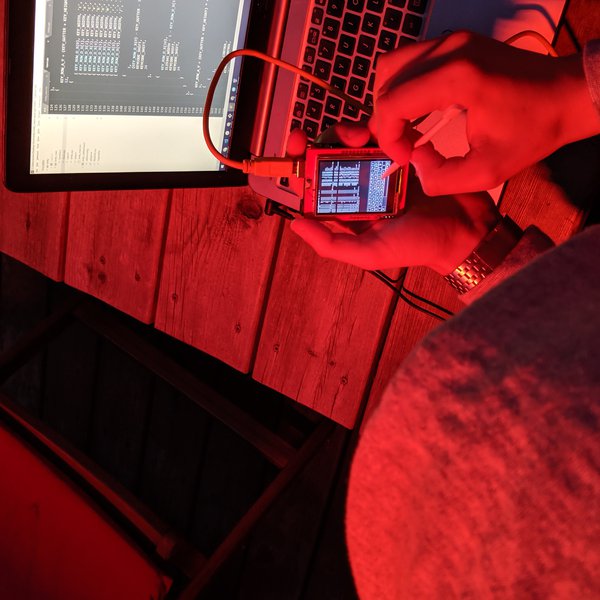Tiny console terminal implemented in Arduino C.
- Adafruit GFX
- MCUFRIEND 2.4inch screen
Testing on Windows is easy to do from a Vagrant VM running Linux. Arduino usually exposes the USB connection as serial COM3 port, so the VM is configured to forward the COM3 port to /dev/ttyS0 inside the Linux environment.
First, ensure the sketch is uploaded (Vagrant will block further COM3 usage when the VM starts).
Start the VM and log in.
vagrant up
vagrant ssh
Inside the Linux VM, the /dev/ttyS0 serial port will now be accessible to talk to the Arduino board. The default baud rate is 9600, which matches the test sketch serial settings.
Simple echo will not work as expected because the Uno board resets once a new connection starts. Instead, the simplest test is to use GNU Screen.
sudo screen /dev/ttyS0
Keystrokes will be sent immediately to the sketch. Screen is technically itself a serial terminal, not a host, so certain keys will not behave as expected. But simple letters should produce visual output on the TFT screen. Exit GNU screen by pressing Ctrl-A and typing :quit.
A proper console test is to start a real shell session using Linux getty. The getty process continuously waits for terminal availability on a given port and spawns a new login shell when the device is ready for display.
Because the Arduino has to spend some time booting and setting up, the sketch emits a CR character once it boots, which lets getty wake up and prompt for login. We use the getty --wait-cr option to make it wait for that code.
sudo su -c '/sbin/getty -L --wait-cr ttyS0' &
Some extra notes on launching getty:
The getty process should not interact with the shell that spawns it, so we launch it in the background. It is important that the getty process is detached from the current ssh session, otherwise the login shell does not get assigned the serial device as its controlling terminal. If that happens, we see a warning like
-bash: cannot set terminal process groupbecause two login shells now try to control the same device - the original ssh and the new getty-spawned one. The su command helps perform that detachment.
Inside the console, once logged-in, run the sizing command, since the screen is non-standard:
stty rows 16 columns 21
Then just log out from the shell. If the login did not work, to terminate getty from the original root shell, just do a normal kill [pid] command - it still responds to external SIGTERM.
Existing AVR-based implementation as initial inspiration:
- https://github.com/mkschreder/avr-vt100 (and updated version https://bitbucket.org/scargill/experimental-terminal/src)
General VT100/ANSI docs:
- http:https://vt100.net/docs/vt100-ug/chapter3.html
- http:https://vt100.net/docs/vt220-rm/chapter4.html
- https://www.gnu.org/software/screen/manual/html_node/Control-Sequences.html#Control-Sequences
- https://en.wikipedia.org/wiki/ANSI_escape_code#Colors
Other interesting implementations I found:
